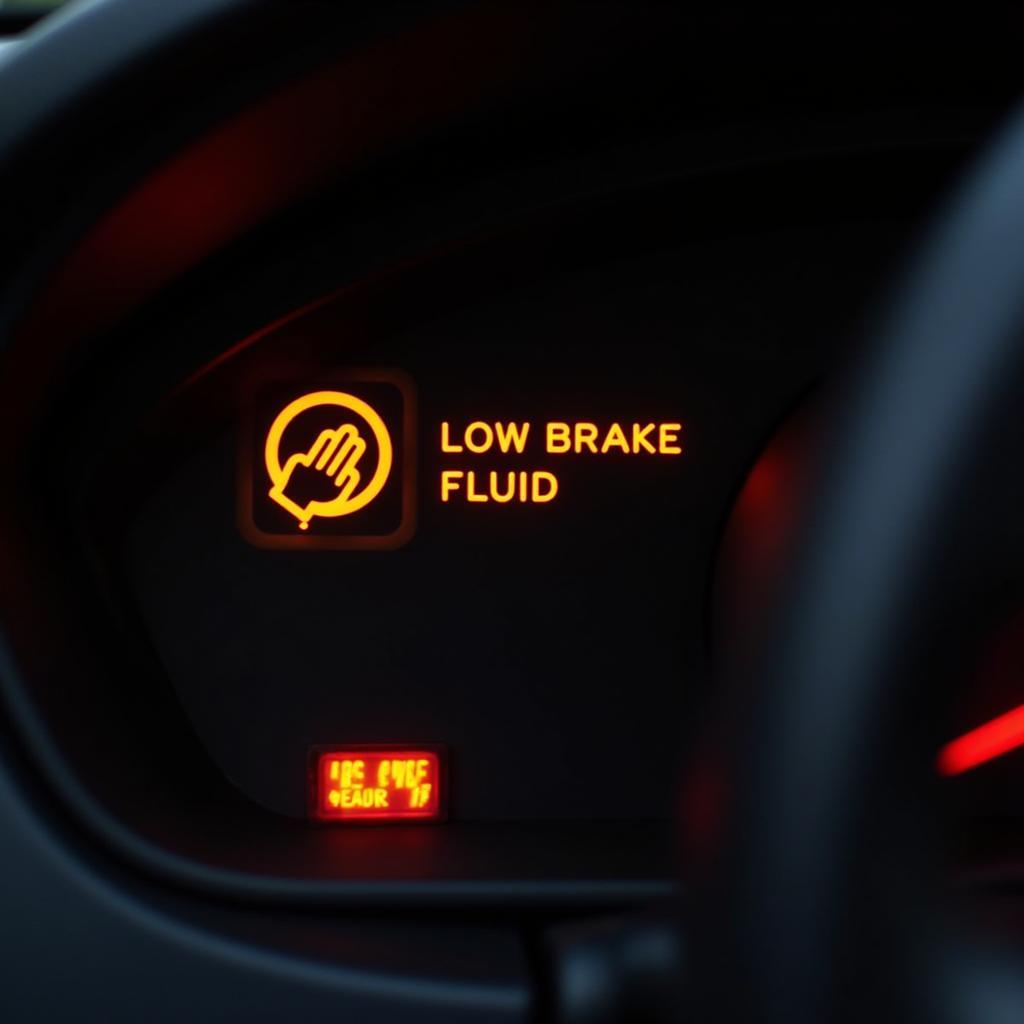The hand brake warning decal on your dashboard might seem like a small detail, but it plays a crucial role in keeping you safe. This often overlooked warning light can be a lifesaver, alerting you to potential issues with your vehicle’s braking system and preventing accidents. This article delves into the importance of understanding this essential safety feature, common reasons it illuminates, and steps you can take to address the underlying problem.
What Triggers the Hand Brake Warning Decal?
The hand brake warning decal, typically displaying an exclamation mark within a circle and the word “BRAKE,” lights up for two primary reasons:
- Engaged Parking Brake: The most common reason for the decal illuminating is simply that you haven’t fully disengaged the parking brake. Always double-check your parking brake before driving.
- Brake System Malfunction: If the light persists even after releasing the parking brake, it indicates a potential issue within your braking system, such as:
- Low Brake Fluid: A leak in the brake lines or worn brake pads can lead to low brake fluid levels, compromising braking performance.
- Faulty Brake Sensors: Sensors monitoring various components of your braking system, like the parking brake lever or fluid level, can malfunction, triggering the warning light.
- Worn Brake Pads: Excessively worn brake pads can activate a wear indicator, illuminating the warning decal.
- Hydraulic System Issues: Problems within the master cylinder, brake lines, or calipers can disrupt hydraulic pressure, compromising braking efficiency and triggering the warning light.
How to Respond to a Hand Brake Warning Decal
- Check Your Parking Brake: Ensure the parking brake is fully disengaged. If the light turns off, you’re good to go.
- Inspect Brake Fluid Levels: If the light persists, safely park your vehicle and check the brake fluid level in the reservoir. If it’s low, adding brake fluid might temporarily resolve the issue, but it’s crucial to have a mechanic inspect for leaks.
- Seek Professional Assistance: A persistent hand brake warning decal necessitates immediate attention from a qualified mechanic. Continuing to drive with a compromised braking system poses a serious safety risk.
 Car dashboard showing low brake fluid warning light
Car dashboard showing low brake fluid warning light
Remote Diagnostics and the Future of Automotive Repair
Advancements in automotive technology have paved the way for remote diagnostics and software solutions for addressing vehicle issues. Today, qualified technicians can remotely access a vehicle’s onboard computer system, diagnose problems related to the hand brake warning decal, and even reprogram certain components.
“Remote diagnostics offer a convenient and efficient solution for diagnosing and addressing issues like brake system malfunctions,” says Alex Davies, a senior automotive electrical engineer specializing in remote diagnostics. “This technology allows us to quickly identify the root cause of the problem and provide tailored solutions without the need for a physical visit in many cases.”
Importance of Addressing the Hand Brake Warning Decal Promptly
Ignoring a persistent hand brake warning decal can lead to severe consequences, compromising your safety and potentially leading to costly repairs. Addressing the issue promptly ensures the optimal performance of your vehicle’s braking system, preventing accidents, and ensuring your peace of mind while driving.
FAQs About Hand Brake Warning Decal
Q1: Can I drive with the hand brake warning light on?
A: While you might be able to drive short distances with the light on, it’s highly discouraged. Driving with a compromised braking system is dangerous and can lead to accidents.
Q2: How much does it cost to fix a hand brake warning light issue?
A: The cost of repair varies depending on the underlying cause. Simple fixes like adding brake fluid can be inexpensive, while addressing complex hydraulic system issues can be more costly.
Q3: Can I fix the hand brake warning light issue myself?
A: While you can check your parking brake and brake fluid levels, it’s best to leave any repairs or diagnostics to qualified mechanics, especially if the issue persists.
Q4: How often should I check my brake fluid level?
A: It’s recommended to check your brake fluid level at least once a month and before long trips.
Q5: What should I do if the hand brake warning light comes on while driving?
A: If the light illuminates while driving, safely pull over to the side of the road and check your parking brake. If the light persists after releasing the parking brake, contact a qualified mechanic immediately.
By understanding the significance of the hand brake warning decal and taking appropriate action, you contribute to a safer driving experience for yourself and others on the road. Remember, a well-maintained braking system is crucial for your safety and the longevity of your vehicle.

